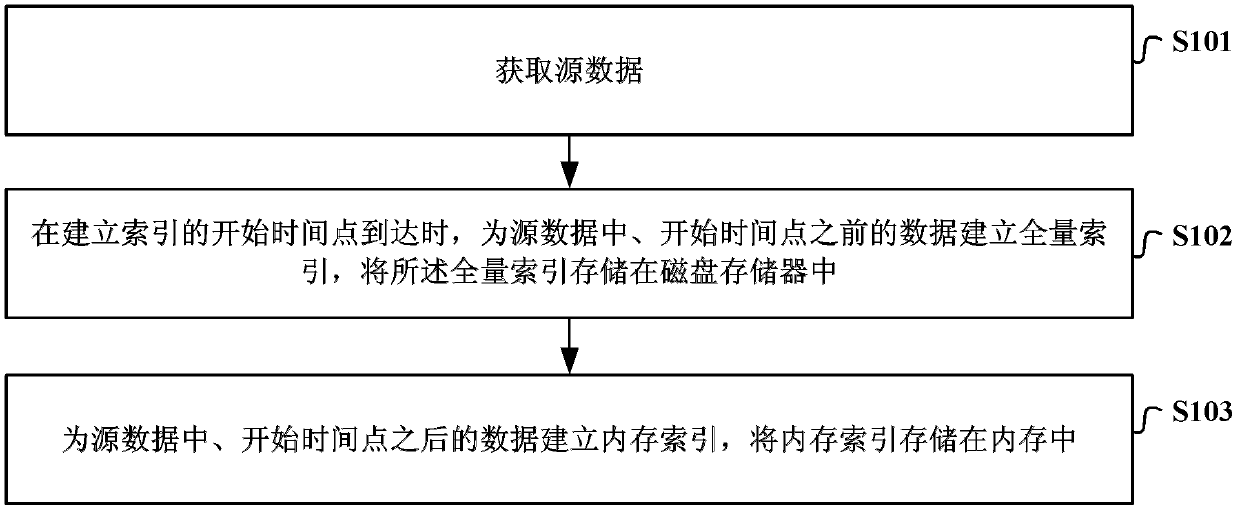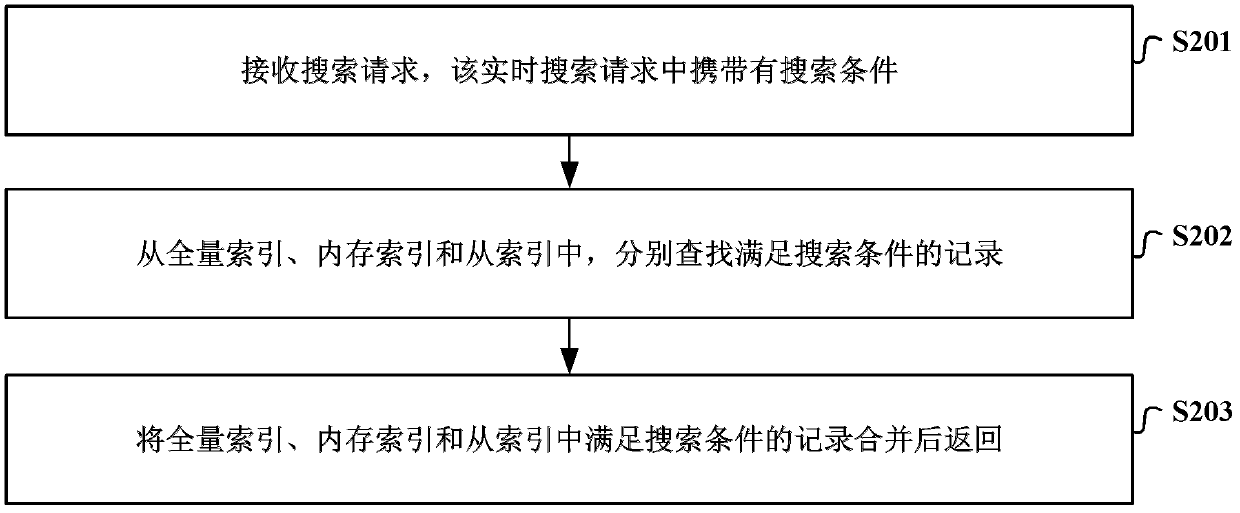Real-time index creating and real-time searching method and device
An index building and real-time search technology, applied in the field of information search, can solve problems such as poor real-time performance, poor portability, and high overhead, and achieve the effects of reducing overhead, reducing system overhead, and improving accuracy
- Summary
- Abstract
- Description
- Claims
- Application Information
AI Technical Summary
Problems solved by technology
Method used
Image
Examples
Embodiment 1
[0053] Such as figure 1As shown, it is a schematic diagram of the implementation flow of a method for establishing a real-time index in Embodiment 1. The method includes:
[0054] S101. Obtain source data;
[0055] In the embodiment of this application, the source data includes two parts, one part is the full index source data required to establish a full index, and the other part is the memory index source data required to establish a memory index, which are introduced separately as follows:
[0056] The first part, full index source data
[0057] The source of full index source data can be various storage systems, such as databases, key-value storage systems, file systems, etc., or network data, for example, data can be crawled from the Internet. During specific implementation, after receiving the full dump (dump) request, the search server acquires the full index source data according to the full index source data and search service characteristics. The search server pro...
Embodiment 2
[0073] As the scale of source data continues to increase, building memory indexes for real-time data after the start time point will take up a lot of memory space and increase system overhead. Therefore, you can merge the established memory indexes into full indexes , and delete the established memory index, and then create a new memory index for the data after the start time of index merging. In this way, the space occupied by the memory index can be reduced, thereby reducing the system overhead. Accordingly, the real-time index building method may further include the following steps:
[0074] When the next start time point of indexing arrives, merge the memory index into the full index, and delete the memory index in the memory; and
[0075] Create a new in-memory index for the data after the next start time point in the source data.
[0076] Wherein, the next time point of indexing is relative to the start time point of indexing. Preferably, the full index and memory index...
Embodiment 3
[0078] In the specific implementation process, after the new memory index is established, the user can continue to submit requests such as search requests, data addition requests, data update requests, and data deletion requests to the search server. Among them, for search requests, the search server only It is necessary to search from the full index and memory index according to the search conditions submitted by the user, and return the search results that meet the search conditions to the user. Therefore, the search data request does not involve data modification, so there is no need to update the memory index; and The other three requests: add data request, delete data request, and update data request all involve data modification, and correspondingly, the memory index needs to be updated in order to further improve the accuracy of real-time search.
[0079] In order to better understand the embodiment of the present application, the implementation process of updating the m...
PUM
 Login to View More
Login to View More Abstract
Description
Claims
Application Information
 Login to View More
Login to View More - Generate Ideas
- Intellectual Property
- Life Sciences
- Materials
- Tech Scout
- Unparalleled Data Quality
- Higher Quality Content
- 60% Fewer Hallucinations
Browse by: Latest US Patents, China's latest patents, Technical Efficacy Thesaurus, Application Domain, Technology Topic, Popular Technical Reports.
© 2025 PatSnap. All rights reserved.Legal|Privacy policy|Modern Slavery Act Transparency Statement|Sitemap|About US| Contact US: help@patsnap.com



